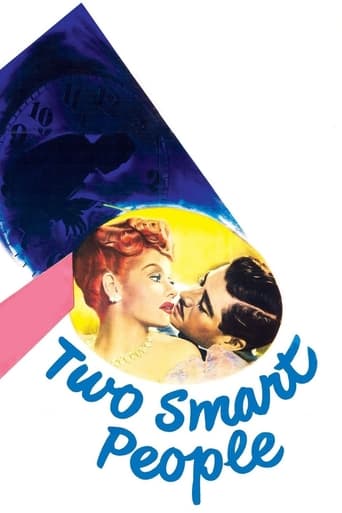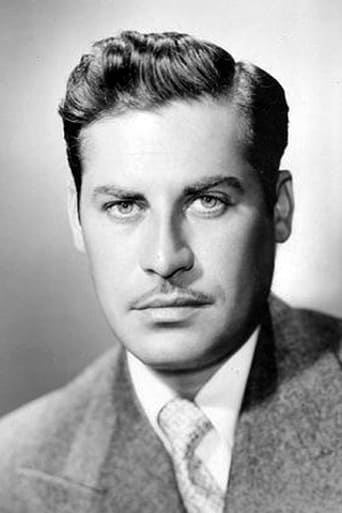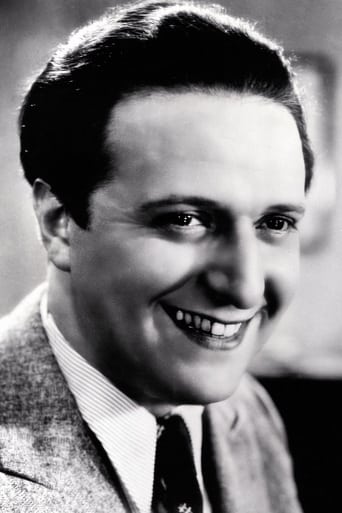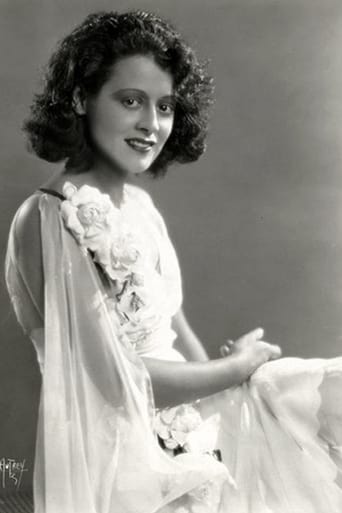Jeanskynebu
the audience applauded
Livestonth
I am only giving this movie a 1 for the great cast, though I can't imagine what any of them were thinking. This movie was horrible
Jenna Walter
The film may be flawed, but its message is not.
Janae Milner
Easily the biggest piece of Right wing non sense propaganda I ever saw.
pronker pronker
I give this 8/10 because it was unexpectedly good, in particular in the romance department as Love overtakes two smart people. Watching it primarily for Ball, her expressive face gliding between smugness and dismay as Hodiak foils her neat fraudulent scheme with her first 'mark' to be seen, a greedy person with too much money and not enough sense. She is fun and later in the film, quite touching in her admission of the feelings of heretofore scorned emotion, love. Hodiak is also good, and the plot fairly simple: Hodiak is an 'honest' crook, willing to endure an assured short time in prison to be freed, later to enjoy his fraudulent bonds. I liked the Mardi Gras element and the fact that the train's milieu is pointed out in their little stumbles and cramped quarters. Lloyd Nolan, stolid cop, gets a taste of the high life but doesn't succumb to any more temptations, where in a darker film, he would have - also in a darker film, we would have shootings and stabbings and failed dreams and whatnot. I did not want to see a darker film so this one, which another reviewer has likened to a Lubitsch film, suited well.
ksf-2
Oil paintings and oil wells. Ricki ( Lucy) and her friend "Ace" are somehow involved in selling things. John Hodiak is "Ace" Connors, and he and Ricki are trying to sell oil wells or paintings, but neither one seems to be authentic, so the buyers back out, and then there are the mysterious missing bonds. Elisha Cook is the dark horse "Feletti". It's all very 1940s noirish, with Lucy all dolled up in fancy costumes, and many things are only partially explained. They all meet on a train when Bob Simms (Lloyd Nolan), is bringing Connors in for justice. Simms tells Ricki why they are on the train, and tries to get her on his side. Then, they end up on the Mexican side of the border. Now, they are all at a Mardi Gras party. Wow, they sure have a lot of adventures for someone on their way to Sing Sing; it's all in good fun as we wait to see if Simms, Feletti, or someone else will find the stolen bonds. You have to really pay attention or you'll miss important details. It's more of a get-away adventure than a who-dunnit. It's okay, but not a lot of meat on the bones of this story. This was a couple years before I Love Lucy. They hardly ever show this one, but her best films were Long Long Trailer, Big Street, Fuller Brush Girl, and Meet the People. Hodiak had just done Hitchcock's Lifeboat, and Harvey Girls.Directed by Jules Dassin, nominated for two Oscars for "Pote tin Kyriaki" 1960. He had also directed Rififi and Topkapi, and was harassed by the House Unamerican Activities Committee in the 1950s. Looks like this is the only time Dassin and Lucy worked on a project together.
bmacv
Anyone coming to Jules Dassin's Two Smart People in expectation of the hard-core noir of his Brute Force, The Naked City, Thieves' Highway or Night and the City will have a surprise in store. Here, Dassin betrays his continental roots in fabricating a light if poignant romance between two con-artists. And though the movie has a noir veneer, it's less suggestive of Fritz Lang or Robert Siodmak than of Ernst Lubitch – specifically the Lubitch of Trouble in Paradise, another elegant romance sparked between larcenous lovers. The pairing here is between Lucille Ball, on the lam from a job she pulled in Hot Springs, Arkansas, and John Hodiak, being escorted back from the west coast to finish a stint at Sing Sing by cop Lloyd Nolan. While trying to sabotage one another's swindles, Ball and Hodiak fall in love, and she joins him on his train journey to that castle on the Hudson. Also in play are half a million in bonds which are tucked away in a fancy cookbook (all ortolans and truffles) that Hodiak, a bit of a gourmet, keeps with him for bedside reading. And the wild card is nasty Elisha Cook, Jr., one of Ball's former partners in crime, who wants the bonds for himself.Dassin keeps a delicate balance between the intrigue and the romance, but the romance wins out (and who's complaining). Hodiak takes to the lighter, more debonair style with greater conviction than he does the harder-boiled roles he played in Somewhere in the Night and Desert Fury that same year. Ball, in a role that is neither too broad (like The Fuller Brush Girl or Miss Grant Takes Richmond) nor too melodramatic (like The Big Street), delivers a subtle and winning performance – and she looks smashing.For his finale, Dassin whisks us to New Orleans during Mardi Gras, granting Cook a flamboyant exit. It's a gaudy set-piece crowded with costumed revelers that raises the spirits before they grow subdued at the surprisingly bittersweet ending. If Two Smart People can be counted as part of the noir cycle (and it often is), it's possibly its most effervescent title. If not, who cares? It remains an offbeat delight all its own.
michael.e.barrett
This obscure B-movie was Jules Dassin's last film before embarking on a series of classic noir and crime films--and actually it's the first of his crime films and shows his interest in developing the genre. As another critic reports in a previous post, this film is NOT a comedy (as Maltin's book describes it) about two con artists mixed up "in art forgery." Actually, it's a crime/road movie about stolen bonds, co-written by the creator of "The Saint." True, Lucille Ball co-stars, and she and John Hodiak meet cute in a TROUBLE IN PARADISE manner, blowing each other's cons with a mutual pigeon. But from the first shot, Dassin reveals his interest in crimeLike Dassin's forgettable comedy A LETTER FOR EVIE, this film is shot by the great Karl Freund, in decline from his silent heyday and not yet arrived at his groundbreaking I LOVE LUCY three-camera period. He gives us expressionist shots aplenty, and such privileged moments as a pan shot with window reflection from outside a train, a cactus-by-moonlight scene, and a chiaroscuro moment when Ball is menaced by Elisha Cook Jr lighting a match. The presence of Cook, Lloyd Nolan, and Hugo Haas (on their way to being entrenched noir icons) also counts for something. The road trip plot (on a train) allows stops in Mexico and New Orleans. The last third (set at Mardi Gras) is suspenseful and colorful, with Cook in fool's motley.In conclusion, if this 1946 film doesn't hold up as well as Dassin's later, truer noirs, we can still see it's an early step in the development of that genre.






